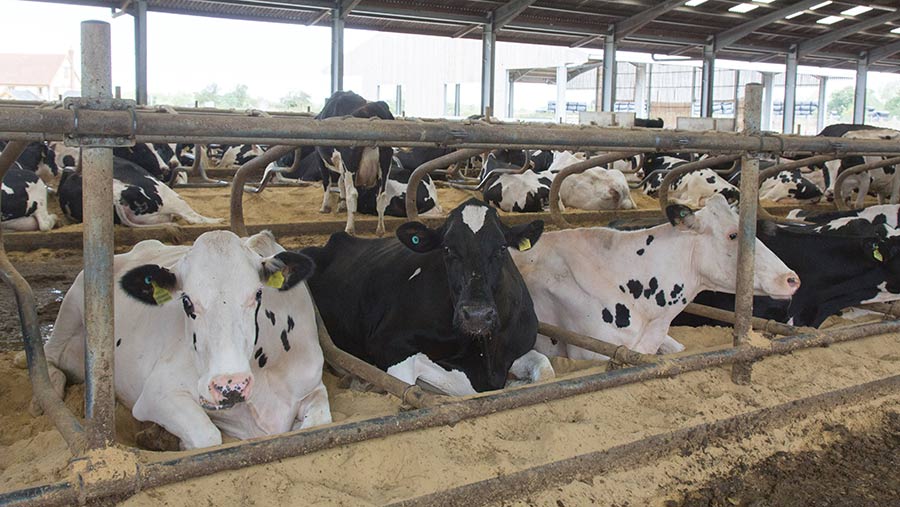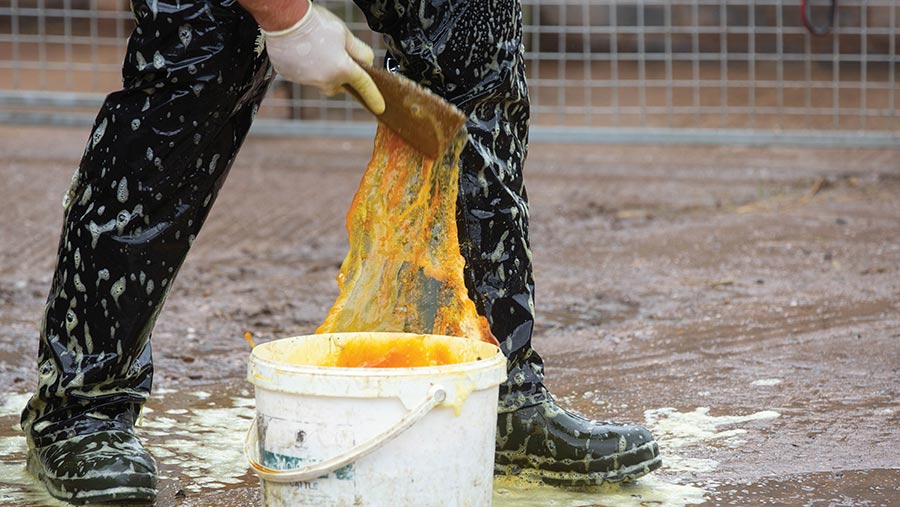Winter dysentery in dairy cattle: Signs, treatment, prevention and control
 © Tim Scrivener
© Tim Scrivener There are many advantages to winter housing for both dairy cattle and farmers.
But because animals are closer together and there is less fresh air inside, there tends to be an increased risk of disease.
One such disease is winter dysentery.
See also: Advice on reducing pneumonia risk as autumn weather swings
Compared with other disease outbreaks in dairy herds, winter dysentery is fairly uncommon.
However, it can cause substantial economic losses on affected farms, and it is not something any farmer who has experienced an outbreak will easily forget.
About the author

Winter dysentery can spread like wildfire through dairy herds soon after housing and hit milk production hard. Beckie Harrison of Peakfield Farm Vets offers expert advice.
What is winter dysentery?
There is still some debate about the exact cause of the disease, but a bovine coronavirus is heavily implicated.
This virus is spread via faecal-oral and respiratory routes and survives well in cold temperatures and low levels of UV light.
The onset of disease is rapid and usually occurs soon after housing, before spreading quickly within a herd.
Up to 100% of cattle can be affected in a very short period, often over seven to 14 days.
The disease can be seen in all ages and at any stage of lactation or pregnancy.
The most obvious sign of winter dysentery is severe, often explosive diarrhoea that is dark in colour and foul-smelling.
In some cases, there may be some mucus and/or bloody material in the muck.
There is usually a marked reduction in milk production at individual and herd level.
Feed intakes can be variable, with some cows retaining a normal appetite while in others it is reduced.
Some mild respiratory signs and dehydration may also occur.
Despite many cows in the herd being affected, the mortality associated with winter dysentery is very low.
Diagnosis
The diagnosis of winter dysentery is usually made by clinical signs and the history of profuse diarrhoea spreading rapidly through the herd, with an associated drop in milk yield.
Testing can be done to isolate bovine coronavirus in the muck, but there are often false negative results with this.
However, it is important to rule out other diseases that can present similarly and can have longer-term effects on the herd.
Salmonella should be considered, particularly if there are also cases of abortion or retained foetal membranes.
An outbreak of bovine viral diarrhoea (BVD) in a naive herd could cause a similar presentation initially, although it would often be accompanied by other signs besides diarrhoea.
Problems relating to feed, such as spoiled silages, can also cause widespread diarrhoea in the herd, so these are worth investigating.
Treatment
Most cows spontaneously recover after a few days without any treatment, although any drop in milk yield may take longer to improve.
For those more severely affected, treatment should focus on correcting any dehydration by supplementing fluids and encouraging feed intake by providing fresh, palatable feed that is easily accessible.
Anti-inflammatory and anti-spasmodic drugs can also be beneficial.
As the disease is thought to be viral, antibiotics are not indicated and are unlikely to be of any benefit unless a secondary bacterial infection is suspected.

© Tim Scrivener
Prevention and control
Although there are vaccines available for the control of calf scour and pneumonia caused by coronaviruses, their effectiveness in the prevention of winter dysentery is currently unknown.
There does appear to be some level of protective immunity that persists in cattle after infection, but a herd that has had an outbreak is likely to have more in the future.
Some herds see it every housing season, while in others it occurs every three to five years.
As with many other diseases, the mainstay of prevention is strict biosecurity and hygiene. The following measures are advised:
- Any bought-in cattle (or those that have mixed with animals from other herds) should be quarantined for at least two weeks, along with isolating any cows with diarrhoea
- Boots, waterproofs and hands should be disinfected between any dealings with isolated animals and the main herd
- Access to the cattle, their housing and their feed should ideally be restricted to essential workers, but this is particularly important in an outbreak
- Maintaining clean sheds by scraping out and replacing bedding frequently will help reduce the build-up of the virus in the environment. Improving ventilation in sheds and reducing stocking densities will also help with this
- Ensuring cattle have consistent access to fresh, palatable, balanced feed throughout the housing period will go a long way in helping them maintain a robust immune system that is more resistant and capable of fighting off disease.
If you are concerned about winter dysentery in your herd, speak to your vet in the first instance.
